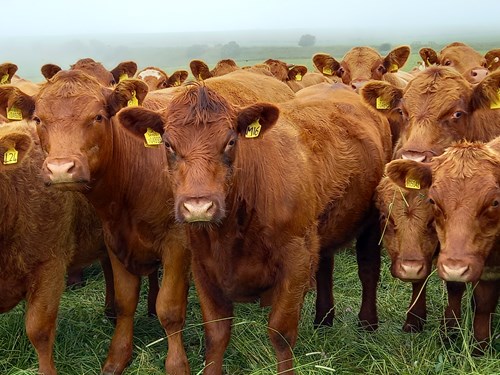Are You Ready for the Scottish Suckler Beef Support Scheme Changes?

The Scottish Suckler Beef Support Scheme (SSBSS), also referred to as the ‘calf scheme’ is changing. From 2025, a 410-day calving interval is being introduced. From 2025, a cow must have a calving interval of 410 days or less, for her calf to be eligible for SSBSS payment. Calves from first time calvers will be exempt from the calving interval conditions and will all be eligible, providing they meet all other conditions of the scheme. At present, to be eligible for the SSBSS scheme you must submit a Single Application Form (SAF), keep your land in good agricultural order, meet the legal requirements for keeping cattle and adhere to the existing conditions for the scheme:
- Calves being claimed are either owned or leased by the claimant.
- Calves are born on a Scottish holding and are kept there continuously from birth for at least 30 days - the youngest calf for the scheme year is born on 1 December, a calf born 2 December is eligible in the next scheme year.
- Calves have a valid cattle passport and have been correctly identified.
- Calves have not been paid under the previous beef calf scheme or beef scheme. Calves are at least 75% beef bred.
The calving interval is based on an individual animal basis each year, not a whole herd one. Calving intervals for dams will be based on previous birth registrations on ScotEID. Producers can view their current herd statistics on MyHerdStats, on ScotEID. Information can be found within MyHerdStats of each individual cows’ calving interval, including cows that are not currently meeting the scheme criteria.

Example: the above cow has calved each year within the 410-calving interval. Each calf will be eligible to claim.
Unregistered calves will not be considered in a cow’s calving interval. Currently there is no legal requirement to register calves that have died before tagging. However, if the calf is not registered, then it will not count towards the cow’s calving interval. If a calf dies after being tagged but before being registered, the existing process of registering a birth and death should be followed.

Example: the above cow lost her calf in 2026, and the calf was not registered. Therefore, the calving interval for the next calf is over the 410 days, making the 2027 calf ineligible for payment. However, her 2028 born calf would be eligible if she remains in the herd.
If mature cows are added to a herd from out with Scotland, the first calf born and registered in Scotland will be eligible, provided it meets the scheme’s other requirements. ScotEID does not hold any historical calving data for cows calving out-with Scotland, meaning that no calving interval can be established.
5 Top Tips
- Claim all eligible calves by 31 December 2024.
- Body condition score (BCS) cows pre-calving. Aim for a target body condition score (BCS) of 2.5 to 3.0 at calving. Thin cows have longer anoestrus (the period after calving before cycling resumes).
- Fertility test stock bulls before the start of the breeding season.
- Reduce bulling periods to move towards a tighter calving period. Aim for a 9-week bulling period for cows.
- Review the calving interval of each cow in your herd to identify the reasons for any cow having a calving interval exceeding 410-days.
Fiona Thomson, Agricultural Consultant, fiona.thomson@sac.co.uk

Unearthed is the exclusive SAC Consulting members' monthly newsletter. Unearthed offers insights and tips from our experts on what we think is in store for farming and crofting in the coming months in order to protect and enhance your business.
Posted by Unearthed News on 16/10/2024
